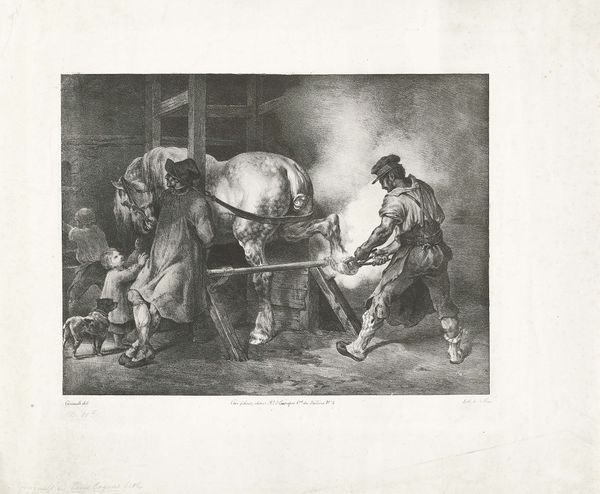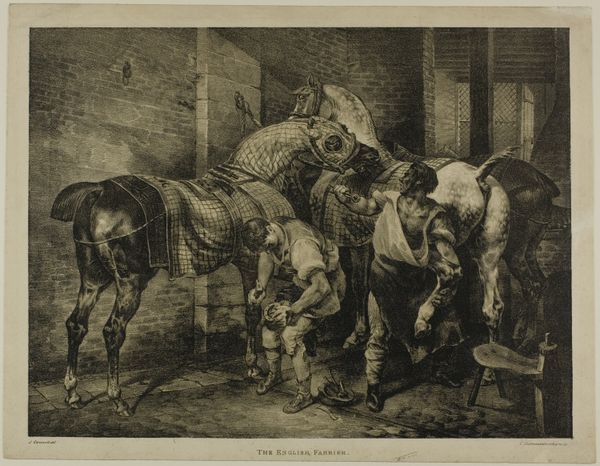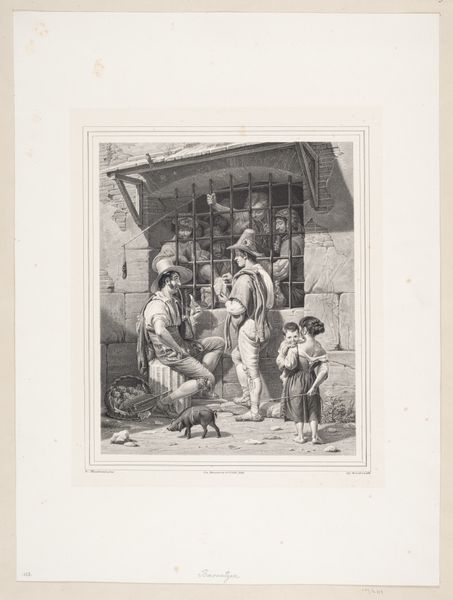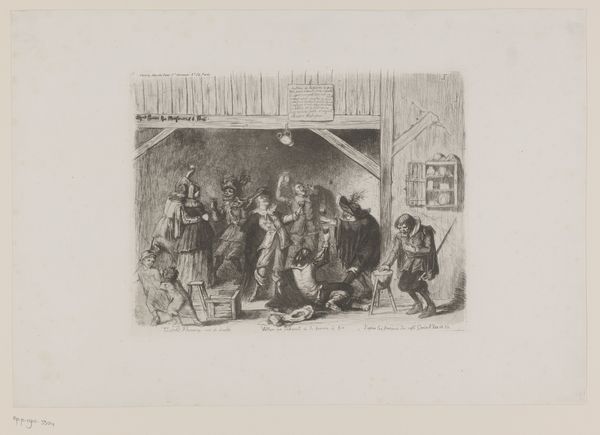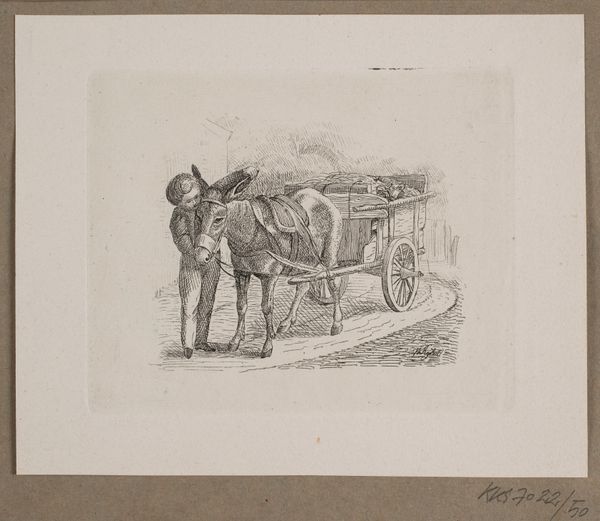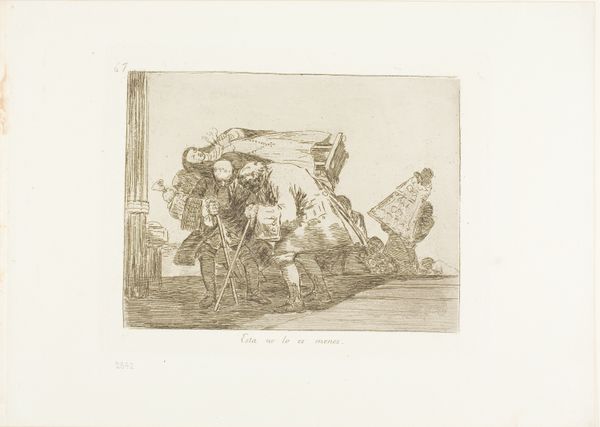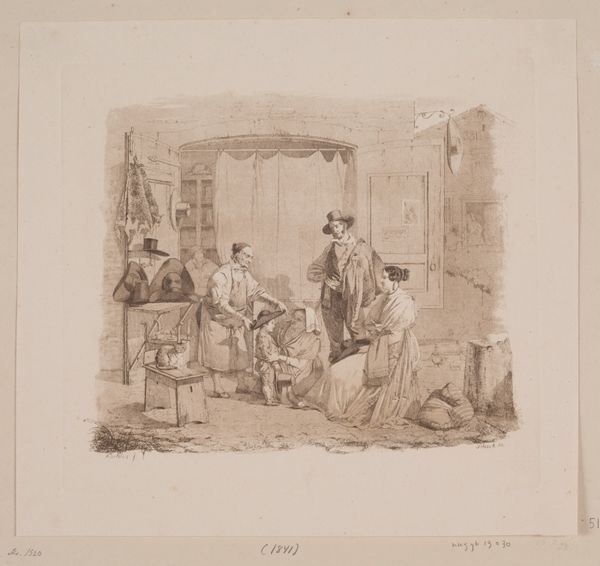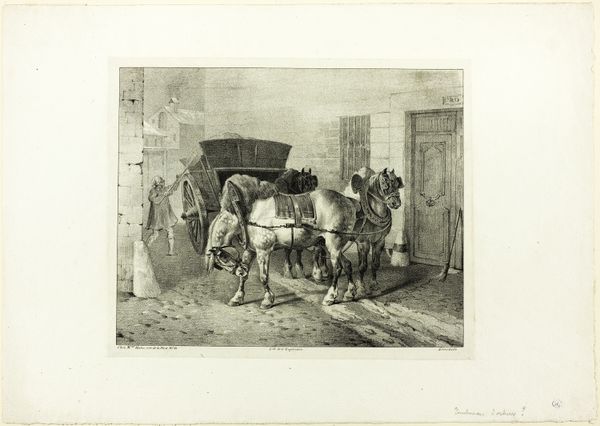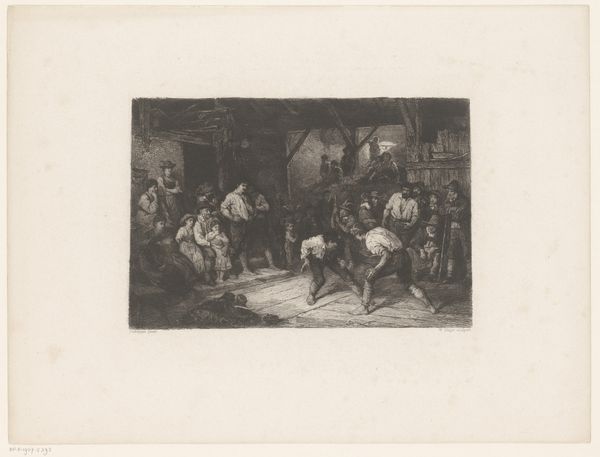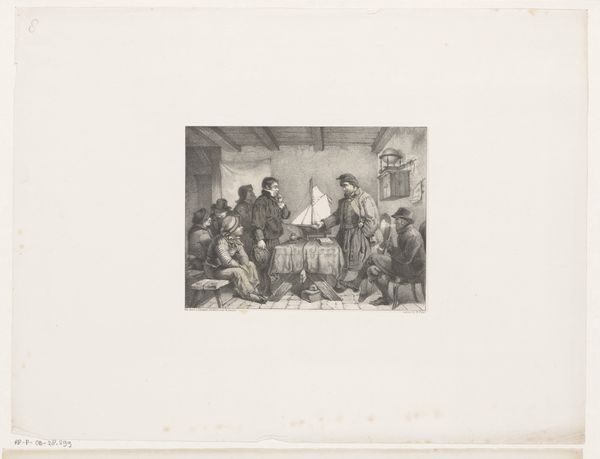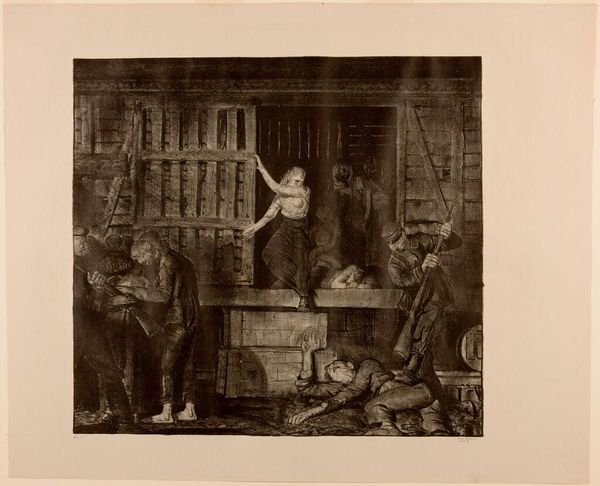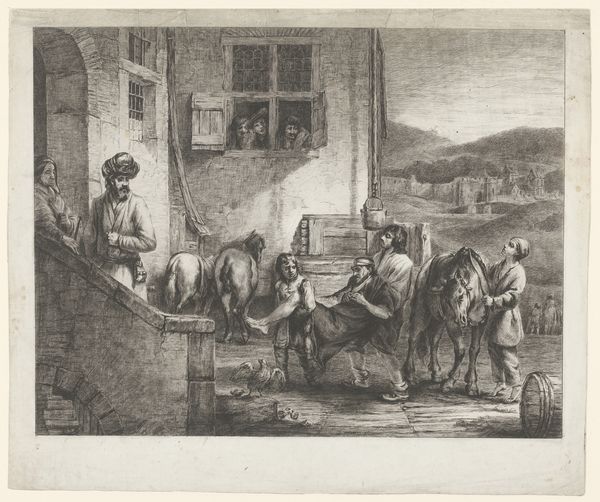
The Flemish Farrier, plate four from Various Subjects Drawn from Life on Stone 1821
0:00
0:00
drawing, lithograph, print, paper
#
drawing
#
lithograph
# print
#
landscape
#
charcoal drawing
#
figuration
#
paper
#
form
#
romanticism
#
france
#
line
#
genre-painting
#
realism
Dimensions: 228 × 315 mm (image); 375 × 496 mm (sheet)
Copyright: Public Domain
Curator: Here we have "The Flemish Farrier, plate four from Various Subjects Drawn from Life on Stone" by Théodore Géricault, created in 1821. It’s a lithograph printed on paper, and a prime example of Géricault's exploration of everyday life. Editor: It's intense! The concentration of the farrier, the sheer size of the horse... the smoky atmosphere. It feels almost theatrical. Curator: Absolutely. Géricault was fascinated by the lives of ordinary people. During the early 19th century, there was a shift in art, focusing away from mythological or purely aristocratic representation towards Realism, reflecting the growing importance of the working class in society. This piece also highlights the shift in printmaking allowing a greater distribution of images. Editor: It’s not just realism, though, is it? There's an undercurrent of Romanticism here as well, in that dramatic light and shadow, in the focus on individual labor and emotion. There is an emotional resonance and it speaks to a human-animal bond, even if within the context of labor. Curator: I agree. The social context also speaks to post-revolutionary France. Images like these became tools for shaping public sentiment, reflecting societal concerns around labor and class. Note the composition: The horse is central but seems constrained. It makes one think about control, labour and social strata. Editor: Precisely. The scene becomes a tableau about the human relationship to power and subservience. Look how small that child appears besides the labouring men, indicating future generation's subservience to the capitalist model of forced labour. It’s far from a neutral image, there are implicit narratives concerning equity at play. Curator: Well said! By choosing such subject matter, artists engaged directly with debates about societal evolution. Works like this one from Géricault show the shifting role of artists as conveyors of public debate during social changes. Editor: Indeed, and that's what makes revisiting these images so pertinent for our moment now: considering who is depicted and how gives us new languages for understanding social politics across the ages. Curator: Géricault offers an understanding of labouring lives that often remain unconsidered in standard historical texts. Editor: Agreed, looking at the past can reveal critical context.
Comments
No comments
Be the first to comment and join the conversation on the ultimate creative platform.

